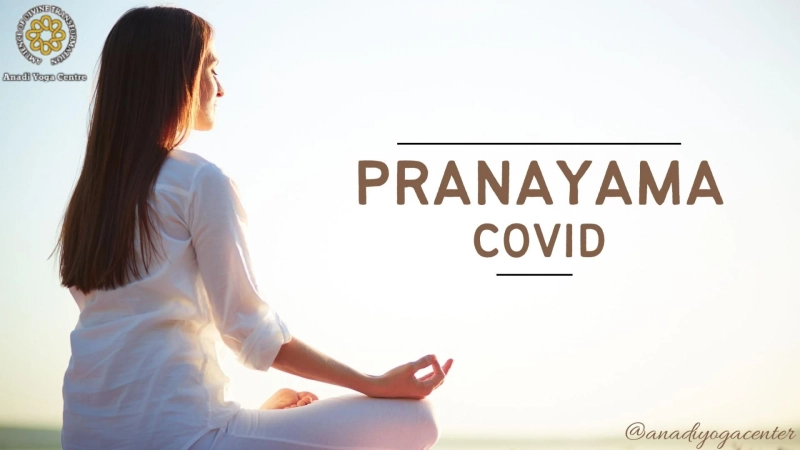What is the connection between Covid and breathing?
Whilst the longer-term effects of COVID are still being studied, it has been well established that it affects the lungs, given it is a severe acute respiratory syndrome (SARS). Hence it follows that where the lungs are reported to be the primary targeted area for COVID, it is critical to take as much care of your lungs as possible. Lungs are our primary breathing organs so clearly; we must discuss lung health and aids to proper breathing when we address covid.
What is Pranayama?
The ancient science of Pranayama (literally translated as elongation of prana or our vital energy) originates from the Hatha Yoga system of India; it is the only science extant today that addresses breathing and henceforth lung health in so much detail. During the pandemic, there has been a lot of information in the media on how pranayama can be used both in the prevention and treatment of COVID.
Pranayama is part of the ancient science of Hatha Yoga and forms a limb of Ashtanga Yoga (the eight limbs of Yoga). The purpose of Pranayama is to deepen the breath and cleanse the lungs through deep breathing. The deeper breath the more the oxygen circulation will be to every cell of the body keeping the body fully vitalized, healthy, and strong. With more oxygen in the body, there will be less carbon dioxide in the body; it is scientifically proven that the more oxygen there is in the body, the more alkaline it will be whereas the more carbon dioxide there is, the more acidic the body. The alkalinity of the body helps in the prevention of disease whereas excess acidity makes the body a breeding ground for disease.
From another perspective, the purpose of pranayama is to calm the mind by deepening the breath; it is believed that the deeper the breath the calmer the mind, and the calmer the mind the more it will remain positive during the onslaught of life’s challenges. Furthermore, a positive mind is medically well known to be the best immuno-modulator against disease. In other words, Pranayama not only improves lung health but also creates a positive mind which in turn can ward off disease and build immunity.
The 5 topmost benefits of Pranayama:
DetoxicationBoosting immunityRevitalisationBalancing the mindCalmnessThere are 7 main types of pranayama exercises but not all are suitable for everyone at every stage of their life. The seven most practiced Pranayama exercises and their respected primary functions are as follows:
Nadi Sodhana/Anuloma VilomaTo balance the right and left hemispheres of the brain
ShitaliTo cool the mind and calm the emotions
UjjayiTo soothe the nervous system
KapalabhatiTo detoxify the lungs
BhastrikaTo strengthen and detoxify the lungs and enhance metabolic function
BhramariTo harmonize the mind
SheetkariTo quieten the mind and calm the emotions
In fact, contrary to popular belief the effect of improper Pranayama can do more harm than good hence it is always advisable that you learn Pranayama from a Yoga Instructor who has completed an accredited Yoga Teacher Training Instructor Course. Such courses are offered at various levels;
200 hour Yoga Teacher Training Course300 hour Yoga Teacher Training Course500 hour Yoga Teacher Training CoursePlease ensure that your teacher has an accredited Yoga Instructor Course certificate which has been accredited. Within the aforementioned courses which are based on Hatha Yoga, Vinyasa Yoga, and Ashtanga Yoga, Pranayama is taught. We, at the Anadi School in Rishikesh, India, ensure that our Yoga Teachers receive the authentic wisdom and experience of Yoga, Pranayama, and Meditation. In this way, you will be guided correctly on the correct application of Pranayama and benefit optimally from this practice.
Some precautions regarding Pranayama and COVID
Medical experts warn that whenever a person is experiencing low oxygen, they should not be doing any heavy breathing exercises. For people who are COVID positive or patients with pre-existing respiratory ailments like asthma, Pranayama that involves forceful breathing is not advisable as it taxes the system beyond its capacity thereby leading to complications. Furthermore, it is advised that it is best for those who suddenly wish to practice pranayama to protect themselves from COVID or to recover faster, to wait a while. If you are a regular practitioner of Pranayama and if you have been doing it regularly it is fine to continue but should you have a cough it is advisable not to do it as it exerts the lungs beyond their capacity and this, in turn, could lead to adverse consequences
When Pranayama is practiced under the guidance of an accredited Yoga Instructor it can enhance well-being and immunity and thereby facilitate the treatment of disease. A tried and tested science from the ancients of India, the benefits of Pranayama have been also been corroborated by modern science.
In the present climate of the COVID pandemic, it is advisable to take up the practice of Pranayama as soon as possible to boost immunity thereby preventing the ‘attack’ of the disease. We at the Anadi Yoga School offer you specialized training in Pranayama and invite you to Rishikesh in India, the land of its origin to learn from our internationally acclaimed teachers.


